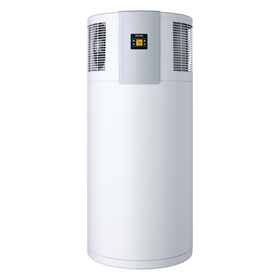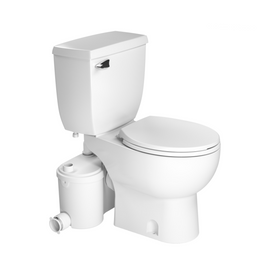
The Value of Biodiversity in Our Homes
Last Updated: Apr 13, 2025Today homeowners are incredibly concerned with the spread of germs and bacteria in our houses. However, what may surprise many is that each of our homes has a distinct microbial ecosystem. Our homes contain a more diverse population of microbes than what we find outside. Microbes, germs, fungi, good and bad bacteria - it is all present in our homes. In addition to preventing the unnecessary spreading of germs, it is also essential for homeowners to understand the importance of biodiversity in our homes. A community of microbes and their genes is called a microbiome.
Table of Contents
- Why Are Microbes Important, and What Do They Do?
- Are Microbes Dangerous?
- How Do Microbes Help Us?
- Where Are Microbes Found in Your Home?
- How Do Built Environments Influence Microbes?
- What Is True of Microbes?
- What Is False Concerning Microbes?
- I Can Thoroughly Sanitize My Home
- The Bottom Line

We spend almost 90% of our time indoors. Consequently, the design and operation of the built environment can have a significant impact on our health. Since microbes are virtually everywhere, it is vital to learn about the microbes that are cohabitating our spaces.
Why Are Microbes Important, and What Do They Do?
Microbes, or microorganisms, are tiny living things that are found virtually everywhere yet cannot be seen with the naked eye. Microbes are a general term for fungi, bacteria, viruses, algae, and protozoa. They can be found on surfaces, in and on our bodies, and in the air, we breathe.
Although microbes are often associated with dirtiness, most microbes are incredibly beneficial. These microbes can be both advantageous and detrimental to our health, depending on their type. They are essential to life. In fact, a human body is made up of over 100 trillion microbes, both in and on the body.
Are Microbes Dangerous?
Mostly not, but sometimes. About 1% of microbes can cause diseases or allergic reactions. Current events will show you just how harmful microbes can be and how they can create worldwide pandemics. Coronavirus, chickenpox, measles, and malaria are all examples of harmful microbes. However, the majority of microbes are surprisingly good for you and your home.

How Do Microbes Help Us?
Microbes help us immensely in a variety of ways and are an indispensable factor in our health. Most notably, a broad range of microbes can help fight allergies and autoimmune diseases, help you digest food, protect you from infections, and even maintain your reproductive health.
Where Are Microbes Found in Your Home?
For better or for worse, microbes are found everywhere in your home. Yes, every nook and cranny. They are on every surface, in the air, and both in and on your body.
Until relatively recently, little was known about the microbial ecosystems within our houses. In 2015, a study aimed to learn more about what exactly lives in our homes. Researchers collected samples from 1,200 homes in the continental United States. They found that, astoundingly, interior microbiomes were 50% more diverse than exterior ones. Samples collected from door trims on both the interior and exterior of these homes. Yet another study from 2013 provided similar findings by examining a university building. These findings tell us that our built environment’s microbiomes are significantly more diverse than microbiomes found in nature.
The researchers from both studies also found that the interior microbial systems were quite distinct from those found outside. And, most surprisingly, most of these microbes came from the humans and pets that occupied the spaces.

What does this mean? Your home has you and your pets to thank for the biodiversity within it. Your body is a unique microcosm of microbes (there’s a tongue twister for you to practice). As you go about your day, these microbes are ‘shed’ from your body. Everything you come in contact with - doorknobs, faucets, remotes, etc. - holds remnants of your personal microbial ecosystem. It may sound gross, but it is inevitable!
If you have a dog, then your home’s biodiversity is even greater. Researchers from the 2015 study found a whopping 56 types of bacteria that are common in homes with dogs and 24 types for homes with cats. Dog ownership was the single most significant determinant of your home’s biodiversity. Scientists share that these microbes are healthy for us - especially children. They can reduce the likelihood of allergies and improve children’s immune systems.
How Do Built Environments Influence Microbes?
Who (and what) you live with are the biggest influencers of the microbes in your home. The number of occupants, age and gender of occupants, and number and type of pets can all make a big difference. An initiative called the Home Microbiome Project discovered that when you move to another house or hotel room, your family’s distinct microbiome moves with you. Your family’s microbiome can take over the new space within a matter of days.
There is also evidence that the built environment can have an impact on the biodiversity of microbe ecosystems. Building design, ventilation, and other building characteristics can all affect the types of microorganisms present within a building. Other potential factors include airflow rates, relative humidity, and temperature. This evidence tells us that we likely have the power to influence the microbiomes within our built environment. However, this needs to be studied more in the future to understand the impacts of buildings on microbiomes fully. It is currently unclear what building factors are most influential to microbe biodiversity.
It is also important to note that local climates, in general, impact microbes. Regional differences can change the types of microbes (specifically, fungi) that are inside your home.
What Is True of Microbes?
We Are Exposed to Hundreds of Thousands of Microbes Every Day
Our bodies, the outside environment, our homes, every surface we touch - all are full of good and bad microbes. Fear not, as is this normal and inevitable. The more diverse the microbiome, the higher the potential health benefits.
The Majority of Microbes Are Healthy for Us
Microbes can reduce the chances of allergies or autoimmune diseases, especially in small children. They can also fight against infections, help with digestion, and help to maintain your reproductive health. However, some microbes have the potential to be very harmful to our health.

Understanding What Factors Influence Your Home’s Microbes Can Have an Impact on Your Health and Well-Being
This study discovered that who you live with (family and friends) and what you live with (pets, specifically dogs and cats) are the most significant influences of the diversity of microbes within your home. Diversity, in general, is beneficial to your individual and home health. But, when fighting against spreading viruses, you may want to lower the diversity of your home’s microbiome.
Microbes Thrive in Different Climates
In other words, there is not a one-size-fits-all solution to reducing the number of microbes in your home (not that you would want to necessarily). Some microbes thrive in cold weather (viruses like COVID-19) while others thrive in warm weather (bacteria like E.Coli). If you want to fight against a specific microbe, learn about what temperature in which it will stop thriving.
What Is False Concerning Microbes?
Microbes Do More Harm Than Good
We often blame viruses and bacteria for common colds, cases of flu, and other ailments. And yet, a diverse microbiome in your home can significantly benefit your health. Less than 1% of microbes are harmful to your health, telling us that most are quite beneficial.
You Cannot Control the Number of Microbes in Your Home
Let’s face it; there is an unimaginable amount of microbes living within the walls of your home. The good news? You have the power to increase or decrease this amount, provided you understand what factors impact this number. The following factors can all increase the number of microorganisms in your home:
- The number of occupants in your home
- Pets living in your home
- The age of your home
- Air conditioning use
- Water leaks
- Moisture
- Mold
- Dust
As stated earlier, this is not necessarily a bad thing. But if you want to decrease this number, take these factors into account and make sure to limit the use of air conditioning, dust often, and fix any mold issues and any water leaks. If you want to radically reduce the number, considering moving to a newer home. Want to increase this number drastically? Get a dog!
Shop All Special Offers
Shop Special Offers on vetted Home Improvement products at low prices while supplies last.

Stiebel Eltron Accelera 300 E Heat Pump Water Heater
Stiebel Eltron
Out of Stock

Victory Range Hoods Sunset 600 CFM White Flush Ceiling Mount Dimmable LED Range Hood
Victory Range Hoods
In Stock

Victory Range Hoods Sunset 600 CFM Flush Ceiling Mount Dimmable LED Range Hood
Victory Range Hoods
In Stock

Stiebel Eltron Accelera 220 E Heat Pump Water Heater
Stiebel Eltron
In Stock

Quickscrews Cabinet Install Screws
Quickscrews
In Stock

Victory Range Hoods Horizon Matte White Flush Ceiling Mount Range Hood with Dimmable LED Lights
Victory Range Hoods
In Stock

Saniflo Sanibest Pro Combo Macerator System
Saniflo
In Stock

Blanco PRECIS Super Single Undermount SILGRANIT Kitchen Sink
Blanco
In Stock
9 Colors

Blanco PRECIS 30 Undermount Single Bowl SILGRANIT Kitchen Sink
Blanco
In Stock
9 Colors

Hauslane Chef 36" UC-PS18 860 CFM Ducted Undercabinet Range Hood
Hauslane
In Stock
2 Colors

I Can Thoroughly Sanitize My Home
Unfortunately, this is not the case. Since there are hundreds of trillions of microbes living in your home, it is impossible to kill them all. However, you can focus on areas of your home that are touched often (doorknobs, remotes, faucets, countertops). Use a disinfectant and old fashioned soap and water. These measures are especially beneficial in cold and flu seasons.
Avoid antibacterial and antimicrobial cleaning products as they promote antibiotic-resistant bacteria.
We Know Everything About Microbes
The reality is that there is still very much we need to learn about microbes. The realm of research that explores the relationship between microbiomes and the built environment is also relatively young. Some studies have found contradicting evidence, and therefore, many more studies are needed for us to understand this relationship fully.
The Bottom Line
There is value in learning about the importance of biodiversity within our homes to ensure our long-term health. The majority of microbes are beneficial to our health, and both humans and pets who occupy homes are the biggest influencers of microbe biodiversity.
Maria Saxton
Located in Roanoke, Virginia, Maria Saxton holds a Ph.D. in Environmental Design and Planning from Virginia Tech. She works as an Environmental Planner and Housing Researcher for a local firm specializing in Community Planning, Architecture, Landscape Architecture, and Historic Preservation. Her dissertation explored the environmental impacts of small-scale homes. She serves as a volunteer board member for the Tiny Home Industry Association.
